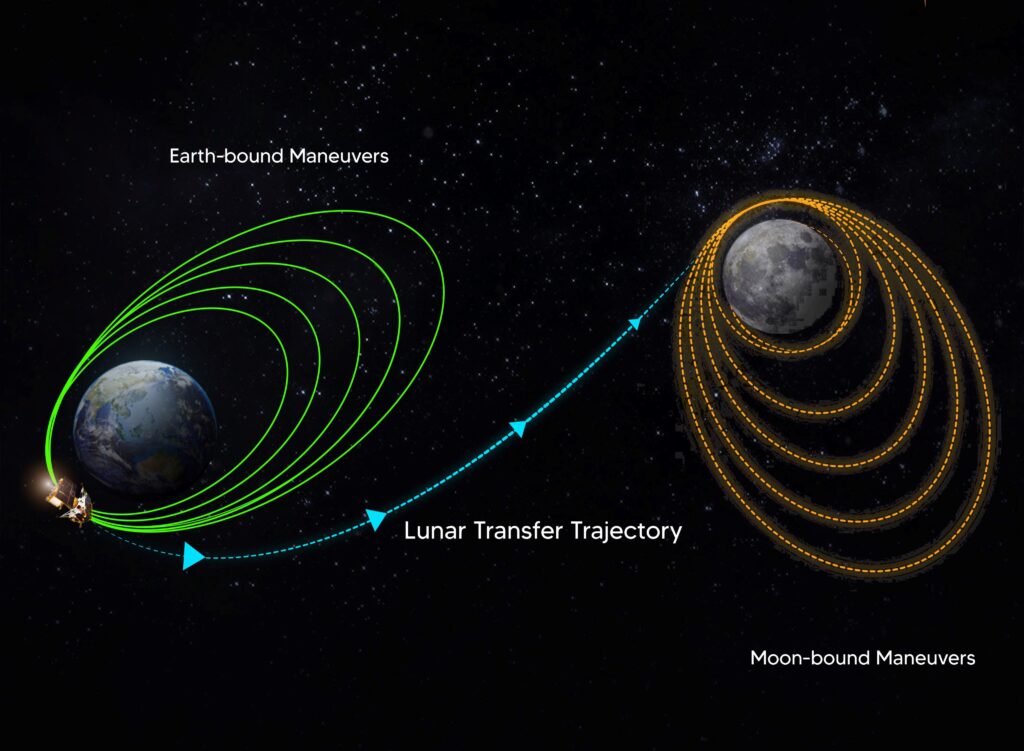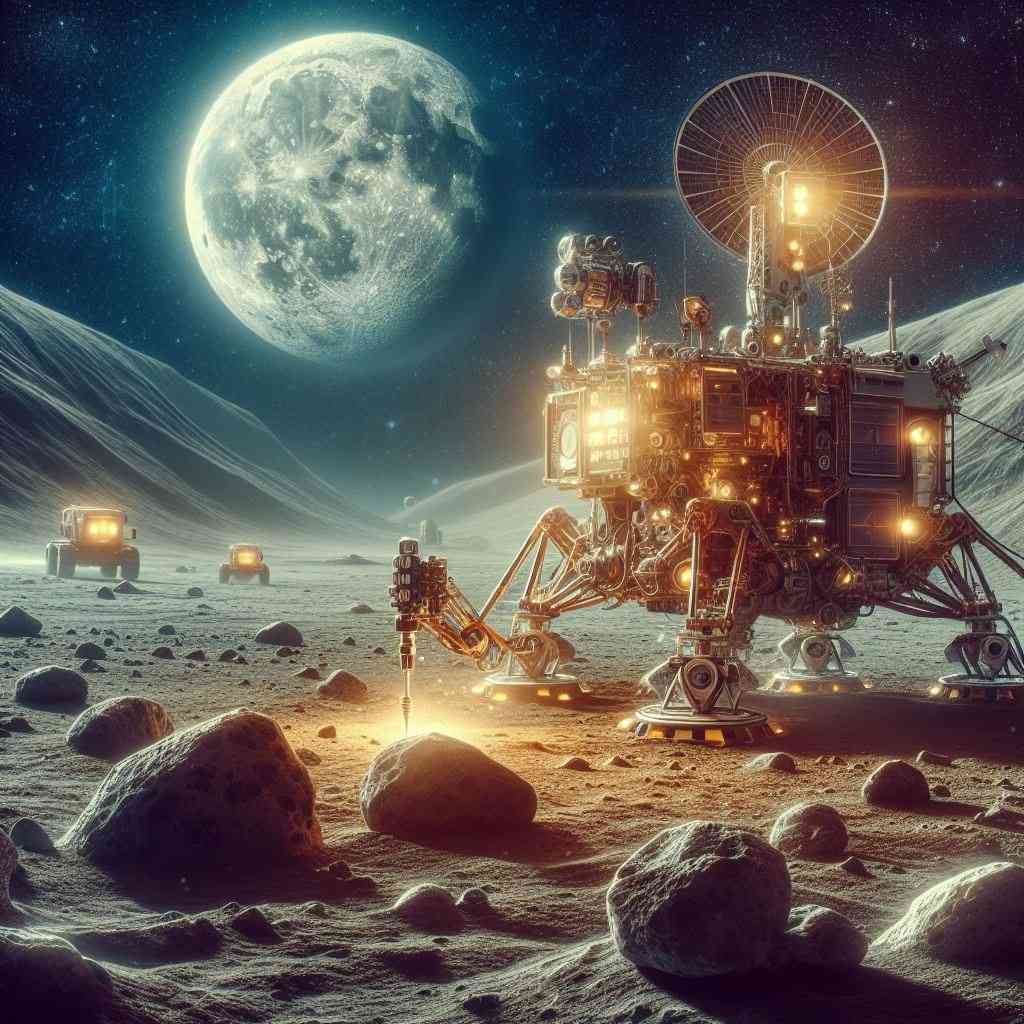After the Success of Chandrayaan 3 ISRO is looking forward to Chandrayaan 4. This mission is more advanced than the previous one and it is beyond soft landing on the lunar surface and it is a lunar sample return mission. This marks ISRO’s fourth lunar mission, with two successful ventures and one unsuccessful attempt so far. Chandrayaan-4 is anticipated to launch around 2027. Additionally, ISRO is collaborating with JAXA for another lunar mission named “LUPEX (Lunar Polar Exploration Mission),” which comes with a distinct set of objectives and is expected to launch around 2026.
All About Chandrayaan 4
The Chandrayaan 4 mission also referred to as a lunar sample return mission, has a fascinating goal. It aims to collect soil and rocks from the lunar south-polar region and then bring these lunar samples back to Earth for further study.
The Chandrayaan-4 mission is comprised of five modules.
(1) Transfer Module (TM)
(2) Lander Module (LM)
(3) Ascender Module (AM)
(4) Re-entry Module (RM)
(5) Propulsion Module (PM)
These five modules will be sent into space using two launch vehicles. The PSLV rocket will launch the Propulsion Module, Transfer Module, and Re-entry Module (PM+TM+RM) together into the Geostationary Transfer Orbit (GTO), and the Lander Module and Ascender Module (LM+AM) will be launched by the LVM 3 rocket into the Transfer Lunar Orbit (TLI).
Transfer Module (TM): This spacecraft is designed to carry the Re-entry Module (RM) from the Geostationary Transfer Orbit (GTO) to the Lunar Orbit, and once again, to transport the RM from the Lunar Orbit to Earth Orbit.
Re-entry Module (RM): This specialized container is responsible for securely holding the lunar samples and ensuring their survival during atmospheric reentry when returning to Earth.
Lander Module (LM): This module is designed to perform a soft and precise landing on the lunar surface.
AM (Ascender Module): It is a type of spacecraft that lifts off from the moon’s surface after sample collection.
Propulsion Module (PM): It is a type of spacecraft component responsible for maneuvering and maintaining the spacecraft’s position around the lunar orbit.
Sequence of Chandrayaan 4 Mission
The Chandrayaan 4 mission will be launched in two phases, with a gap of several days between each phase, by using two different rockets.
Phase 1
This mission will begin with the launching of the PM+TM+RM module by PSLV or GSLV MK II rocket into GTO, From GTO these three modules will reach into Lunar orbit by following the same path as followed by Chandrayaan 3 to reach lunar orbit. Approximately 30 to 45 days after the launch, the PM+TM+RM module will successfully arrive in lunar orbit. Once in lunar orbit, these modules will park themselves in the designated lunar orbit.

Phase 2
The LM+AM module will be launched into the Transfer Lunar Orbit (TLI) by the LVM 3 rocket approximately 10 to 15 days after the launch of the first rocket. About 5 to 8 days following its launch, the LM+AM module is expected to reach lunar orbit.
Once all five modules have reached lunar orbit, the PM+TM+RM module will park itself in lunar orbit and wait, while the LM+AM module gently lands on the moon’s surface.
(1) Soft landing on the moon surface and Sample Collection: LM+AM will soft land around Shiv Shakti point where Chandrayaan 3 was landed, The Robotic arm of the Lander Module (LM) collects soil and rocks from the lunar surface and transfers these samples to Ascender Module (AM). Later, the Ascender Module (AM) will detach from the Lander Module (LM), lift off from the lunar surface leave the Lander Module behind, and reach a lunar orbit where the TM+RM module will be parked.
(2) In-Orbit Docking with the Ascender Module: Upon the Ascender Module (AM) reaching lunar orbit, where the PM+TM+RM is stationed and waiting, the AM will dock with the PM+TM+RM module. The robotic arm of the Transfer Module (TM) will facilitate the transfer of lunar samples from the AM to the Re-entry Module (RE). Subsequently, the Ascender Module will detach itself from the PM+TM+RM module and stay in lunar orbit. Following this, the PM+TM+RM module will initiate its return trajectory toward Earth’s orbit.
(3) Re-entry and landing on Earth: Upon reaching Earth’s orbit, the Re-entry Module (RM) separates from the Transfer Module (TM), and Propulsion Module (PM) and enters the Earth’s atmosphere. The RM, carrying lunar samples, will then splash down into the Indian Ocean with the assistance of parachutes. Subsequently, the ISRO team, in collaboration with the Indian Navy, will retrieve the RM from the ocean.
The objective of Chandrayaan 4 Mission
The sole objective of Chandrayaan 4 is the collection of samples from the lunar surface and their subsequent return to Earth. The success of Chandrayaan-4 hinges on its capability to successfully bring lunar samples back to Earth.
Read Also Mangalyaan 2: India’s 2nd mission to Mars
Mission Life
Despite the mission’s duration of Chandrayaan 4 extending over 100 days, from the launch of the initial two modules to the retrieval of the Re-Entry Module (RM) from the sea, the operational life of the mission is limited to a single Lunar day, equivalent to 15 days on Earth. Within this timeframe, the Lander Module (LM) efficiently gathers soil and rocks from the Lunar Surface, transferring these samples to the Ascender Module (AM), which subsequently lifts off from the lunar surface.
Specification of Chandrayaan 4
| Mission | Chandrayaan 4 or lunar sample return mission |
| Launch date | Around 2027 |
| Launch Vehicle | PSLV/GSLV MK II and LVM 3 |
| Number of Modules | 5 |
| Objective | Land on the moon and bring lunar rocks to Earth |
| Landing Site on the Moon | Near Shiv Shakti Point ( 69.367621 S, 32.348126 E ) |
| Mission Life | 1 Lunar Day is equivalent to 14 days on Earth |
Chandrayaan 4’s Role in India’s Human Landing Mission on the Moon
ISRO aims to achieve a manned lunar landing by 2040, allowing astronauts to spend a considerable duration at the Artemis lunar base and bring them safely to Earth. The technology developed for the Chandrayaan 4 mission will be adapted for use in the human landing mission on the Moon by upgrading and ensuring these technologies meet human-rated standards.
Read also Indian Space Station: ISRO to launch Bhartiya Antariksha station by 2028

